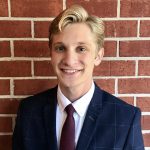The United States spends more on health care as a percentage of gross domestic product (GDP) than any other developed country, but that level of investment is producing better health care outcomes. In many cases, barriers to entry for medical practitioners reduce competition, limit supply, and raise prices for consumers. Meanwhile, the country’s growing, aging population is expected to generate a shortage of between 46,900 and 121,900 physicians by 2032. Occupational licensing and scope of practice reform could expand access to medical care and reduce costs by eliminating anti-competitive policies.
Over the past several decades, state-level occupational licensing expanded dramatically across the county. In the early 1950s, just 5 percent of workers required a license compared to more than 20 percent of workers in 2018. Occupational licensing originated as a means for quality control in professions that potentially pose serious risks to public health. Over time, however, organized interests lobbied for licensure of more and more obscure occupations and increasingly onerous requirements to obtain a license. The practical effect has been to protect licensed practitioners from competition and inflate wages in licensed occupations without improving quality.
There is a growing movement to roll back excessive licensing policies, but much of the discussion has focused on minor industries and occupations. While widely licensed occupations including cosmetologists, landscape contractors, and travel guides demonstrate the superfluous nature of licensing, they make up relatively small shares of licensed workers and total employment. Health care workers, on the other hand, comprise 12 percent of total employment and one-fourth of all licensed workers.
Licensure of health care workers may seem like a reasonable form of regulation in the interest of public safety, but the variation in licensing requirements across states indicates that there is room for reform. For example, 22 states license opticians, with their required training ranging from none in California to over three years in Nevada. Just nine states license dental assistants, but Minnesota requires more than a year of training, the passing of three exams, and paying $681 in fees to earn a license.
Non-physician health care providers including dental hygienists, dental therapists, registered nurses, and physician assistants in all 50 states are either nationally certified, licensed by state boards, or both. Depending on state policies, they are capable of practicing autonomously and serve particularly important roles in rural areas where access to medical care is often limited. However, supervision requirements and scope of practice laws restrict the autonomy and range of services these practitioners can provide. States frequently use scope of practice laws to limit the things that nurses, physician assistants, and other health care workers are allowed to do on the job. Changes these rules imposed on key health care positions could significantly increase access to care and lower costs.
Dental Health Providers
Dental hygienists assist dentists in providing care to patients but are able to perform a broader range of services than dental assistants. Beyond licensing requirements, the primary restrictions faced by dental hygienists are direct access and prescriptive authority. According to the American Dental Hygienists Association, “Direct Access refers to the ability of a dental hygienist to initiate treatment based on their assessment of a patient’s needs without the specific authorization of a dentist, treat the patient without the presence of a dentist, and maintain a provider-patient relationship.”
Some states do not allow direct access for dental hygienists. Others require supervision by dentists or have minimum education and experience requirements. Only Florida, Maine, Kentucky, Wisconsin, Colorado, and Nevada do not require supervision. Most states do not grant prescriptive authority to dental hygienists.
Dental therapists are a relatively new category of dental care providers. They are mid-level dental practitioners capable of performing several services previously reserved for dentists. Beginning with Alaska in 2005, eight states have recognized dental therapists through licensing reform. At least a dozen others are considering similar reforms to allow for greater access to dental care. Early analyses of the impacts of dental therapists show impressive results. Since 2005, dental therapists have expanded access to over 45,000 Native Alaskans living in rural areas.
Advanced Practice Registered Nurses
All Registered Nurses (RNs) are required to participate in state board approved programs to receive licensure. These programs include associates, bachelors, or hospital-based diploma programs. Advanced practice registered nurses (APRNs) undergo additional education and training through graduate-level programs. Broadly, APRNs are granted additional oversight responsibilities and are more specialized than registered nurses (RNs). Nurse practitioners (NPs) are a subset of APRNs who, depending on the state in which they practice, are able to provide many of the same services as physicians.
NPs possess the training and expertise necessary to assess patients, make diagnoses, and devise treatment plans. A report from the former congressional Office of Technology Assessment indicated that NPs could perform a substantial proportion of tasks normally provided by primary care physicians and “as much as 75 percent of the well-person care for both adults and children” However, state-level regulations limit the autonomy of NPs by restricting practice authority and prescriptive authority.
Under full practice authority, NPs are allowed to practice to the full extent of their training without supervision by a physician. About half of the states require NPs to have an agreement with a physician which outlines the services they are allowed to provide and procedures for consultation with the physician. Some states allow NPs to practice independently after completing a transition to practice period. Only 11 states allow for full independent practice with no physician oversight.
Nurse practitioners face similar restrictions on prescriptive authority. Twenty-five states require career-long relationships with physicians to prescribe medications. Independent prescription authority is allowed after a transition period in five states, while the remaining 20 states allow full independent prescriptive authority.
Proponents of full practice authority for APRNs include the National Academies of Medicine and AARP. Research suggests that less restrictive scope of practice laws improve health care access without posing risks to public safety. For example, a study published in the Journal of Law and Economics found that more restrictive scope of practice policies resulted in higher costs of three to 16 percent for well-child visits with no difference in quality or safety.
Physician Assistants
Like APRNs, physician assistants (PAs) are required to participate in approved graduate-level programs to receive licensure from state boards. PA programs are modeled after traditional medical school curriculums and prepare PAs to perform many of the same functions as physicians. By definition, PAs work under the supervision of physicians, but their degree of autonomy varies widely across states depending on supervision requirements, prescriptive authority, and scope of practice laws.
In 22 states, supervision requirements are set by law or determined by state licensing boards. The remaining 28 states offer more flexibility by allowing physicians and PAs to determine supervision conditions at the practice level. The vast majority of states allow prescriptive authority and scope of practice to be determined by supervising physicians at the practice level. However, most states restrict PAs in at least one aspect.
Allowing more flexibility for PAs could increase access to care and reduce costs. A study from the Mercatus Center found that less restrictive scope of practice laws for PAs reduced the cost of outpatient services to Medicaid recipients by between 11.8 and 14.4 percent.
As the population continues to age, adequate access to medical care will be increasingly difficult to achieve without expanding the role of non-physician health care providers. Dental hygienists, dental therapists, nurse practitioners, and physician assistants are capable of performing many of the same procedures as dentists and physicians, but state-level regulation often prevents them from practicing the full extent of their education and training. Occupational licensing and scope of practice reform would expand access to health care and lower costs by allowing physicians and dentists to use their time more efficiently.

